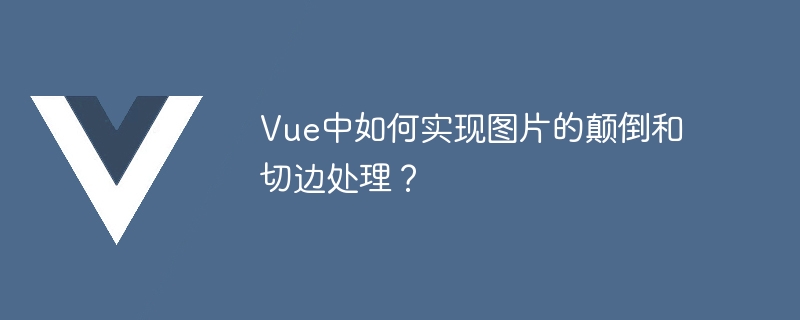

How to invert and trim images in Vue?
In front-end development, image processing is a frequently encountered problem. Sometimes we need to turn the picture upside down or trim the edges. This article will introduce how to use Vue to achieve these image processing effects.
Invert the image
In Vue, you can use the transform attribute of CSS to achieve the effect of inverting the image. First, add a class name to the image, such as "flip-image". Then, in the style of the Vue component, add the following code:
.flip-image {
transform: scaleY(-1);
}In this way, the image will be flipped vertically to achieve an upside-down effect.
Edge trimming processing
Edge trimming process is to crop the edges of the picture into a specific shape. In Vue, you can use the CSS clip-path property to implement edge trimming. First, add a class name to the image, such as "clip-image". Then, in the style of the Vue component, add the following code:
.clip-image {
clip-path: polygon(0 0, 100% 0, 100% 80%, 0 100%);
}In this example, we cut the four corners of the picture into an irregular shape. You can adjust the polygon parameters to achieve different edge trimming effects according to your needs.
Implementation in Vue component
In the Vue component, we can use the v-bind instruction to dynamically bind the class name to achieve image processing effects. The following is a simple Vue component example:
<template>
<div>
<img :src="imageUrl" :class="{ 'flip-image': isFlipped, 'clip-image': isClipped }" alt="How to achieve image inversion and edge trimming in Vue?" >
<button @click="flip">Flip</button>
<button @click="clip">Clip</button>
</div>
</template>
<script>
export default {
data() {
return {
imageUrl: 'path/to/image.png',
isFlipped: false,
isClipped: false,
}
},
methods: {
flip() {
this.isFlipped = !this.isFlipped;
},
clip() {
this.isClipped = !this.isClipped;
},
},
}
</script>
<style>
.flip-image {
transform: scaleY(-1);
}
.clip-image {
clip-path: polygon(0 0, 100% 0, 100% 80%, 0 100%);
}
</style>In this example, we use Vue's dynamic class binding function to achieve image processing effects. When the Flip button is clicked, the isFlipped property will be inverted, thus triggering the binding and unbinding of the class name. Similarly, when the Clip button is clicked, the isClipped property will be inverted to achieve binding and unbinding of the class name.
Summary
By using the transform property and clip-path property of CSS, we can achieve the inversion and edge-cutting effects of images in Vue. Through dynamic class binding, we can implement interactive image processing in components. I hope this article can help you better understand and apply image processing technology in Vue.
The above is the detailed content of How to achieve image inversion and edge trimming in Vue?. For more information, please follow other related articles on the PHP Chinese website!